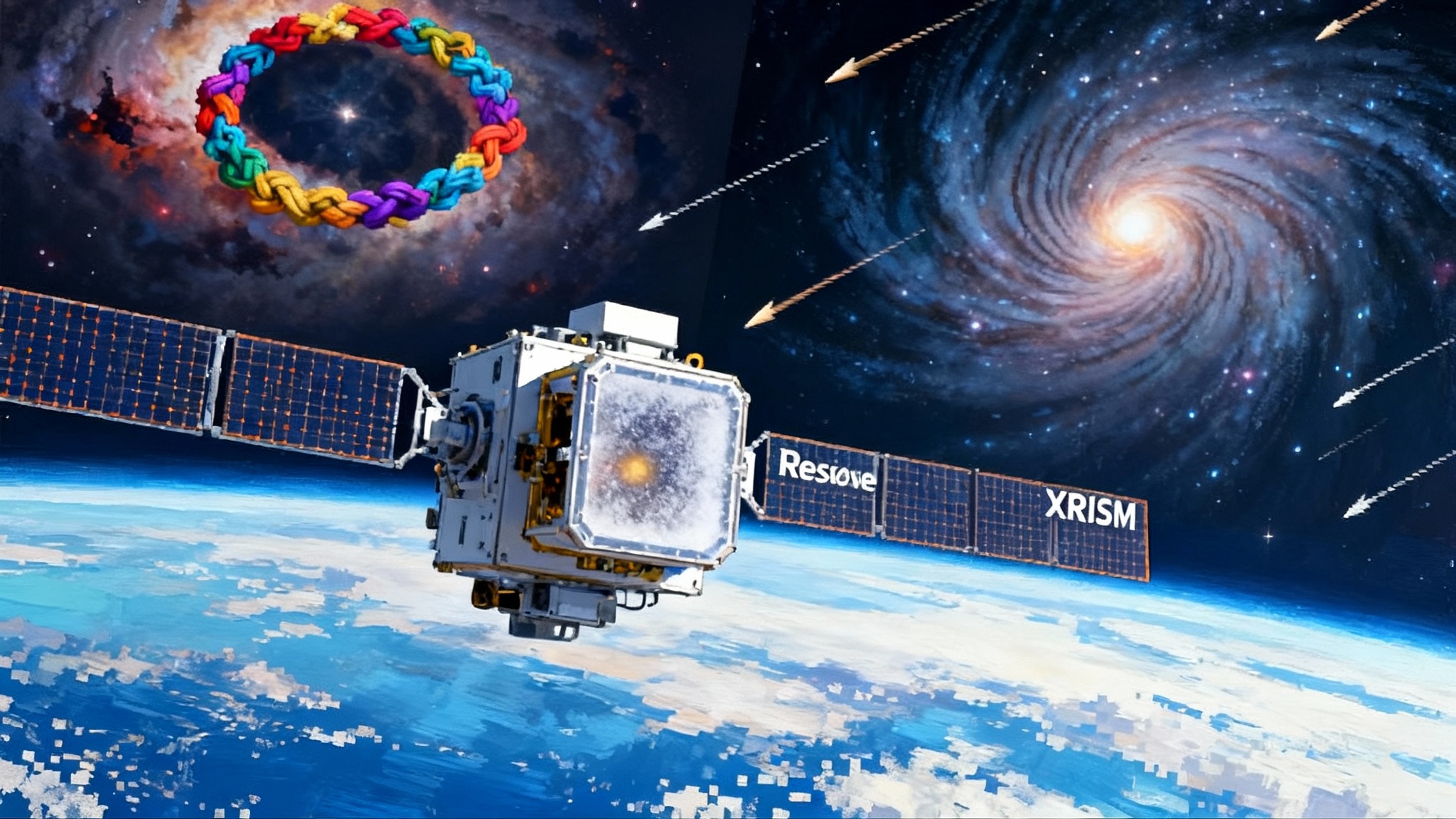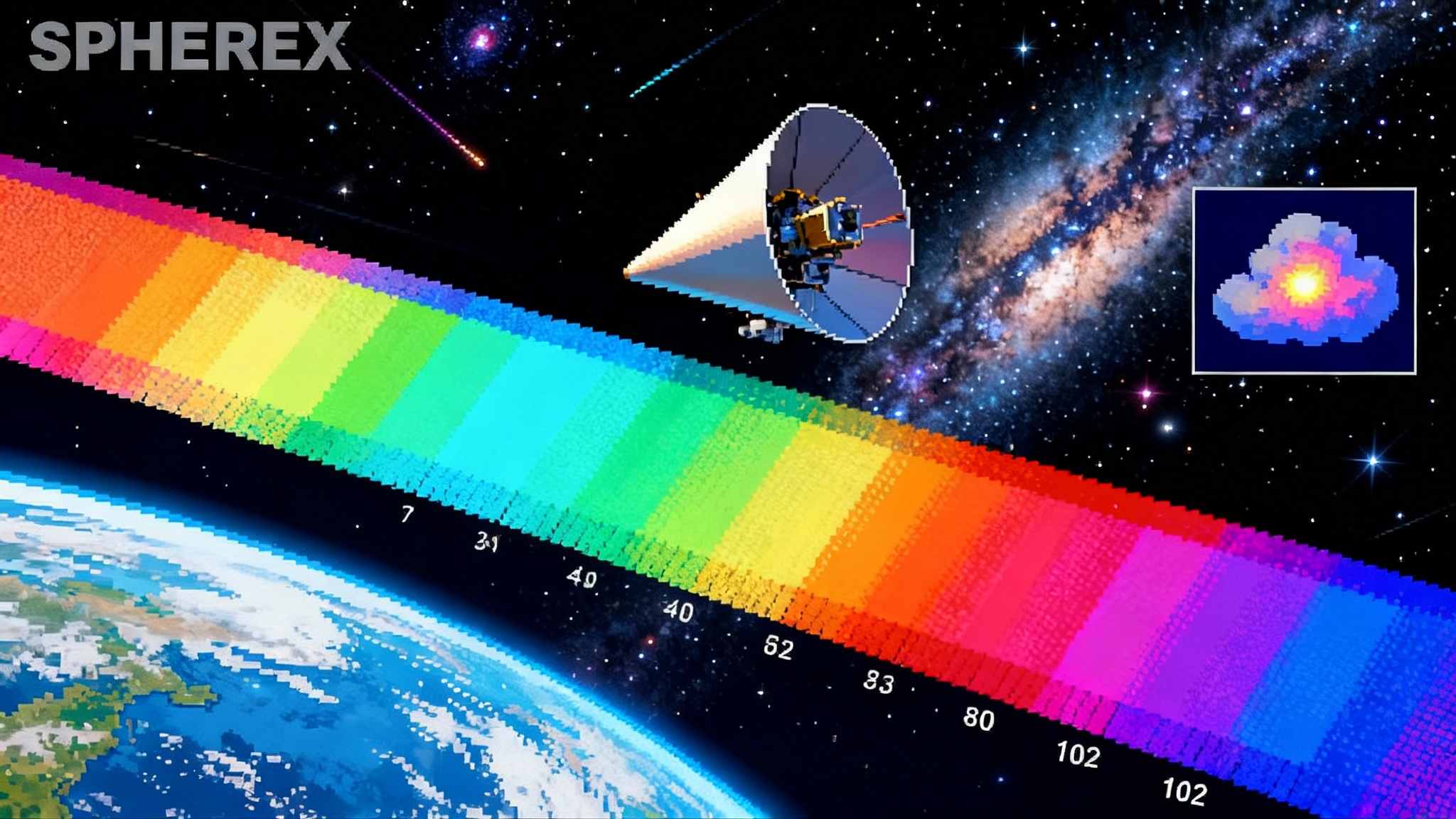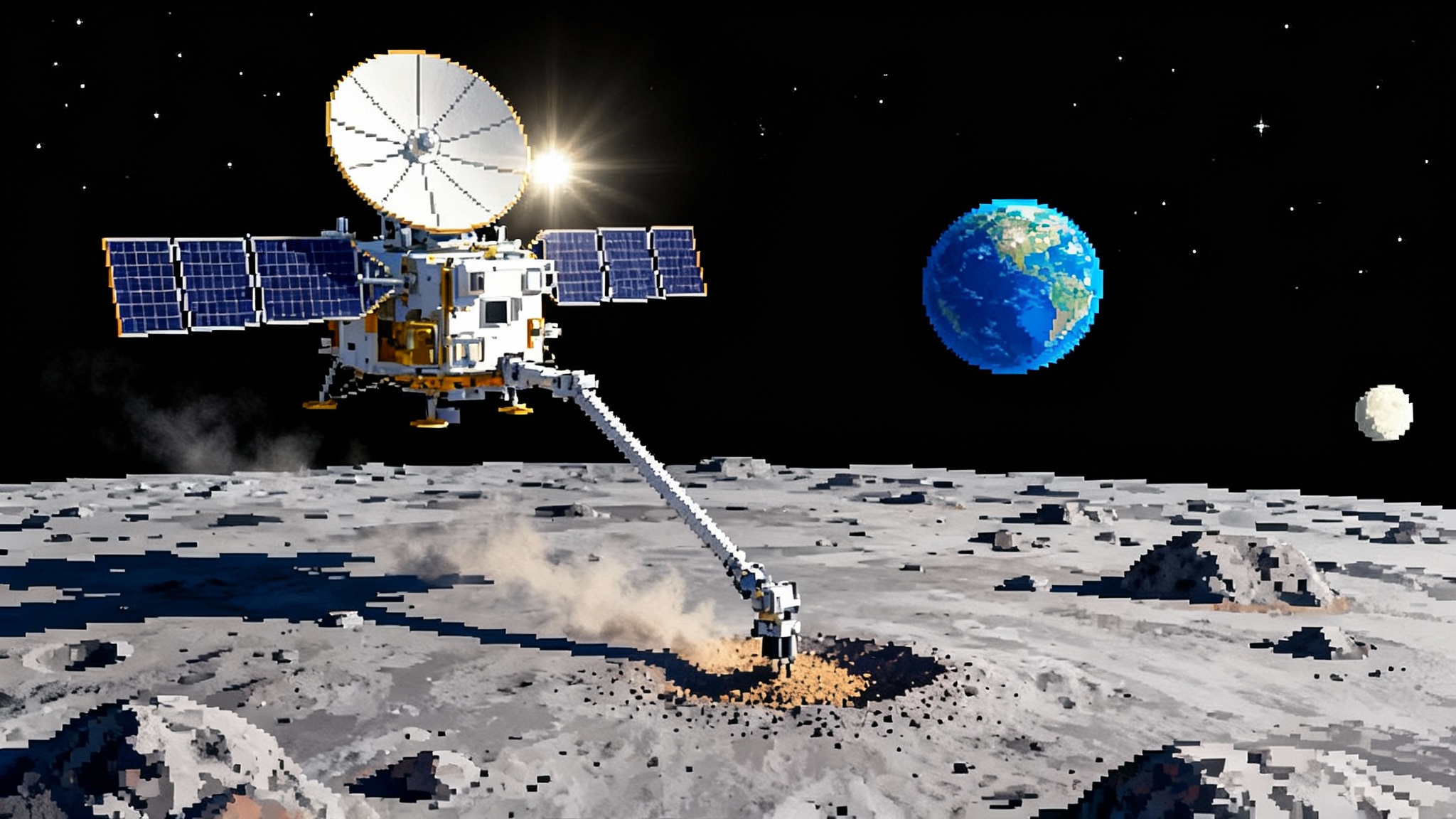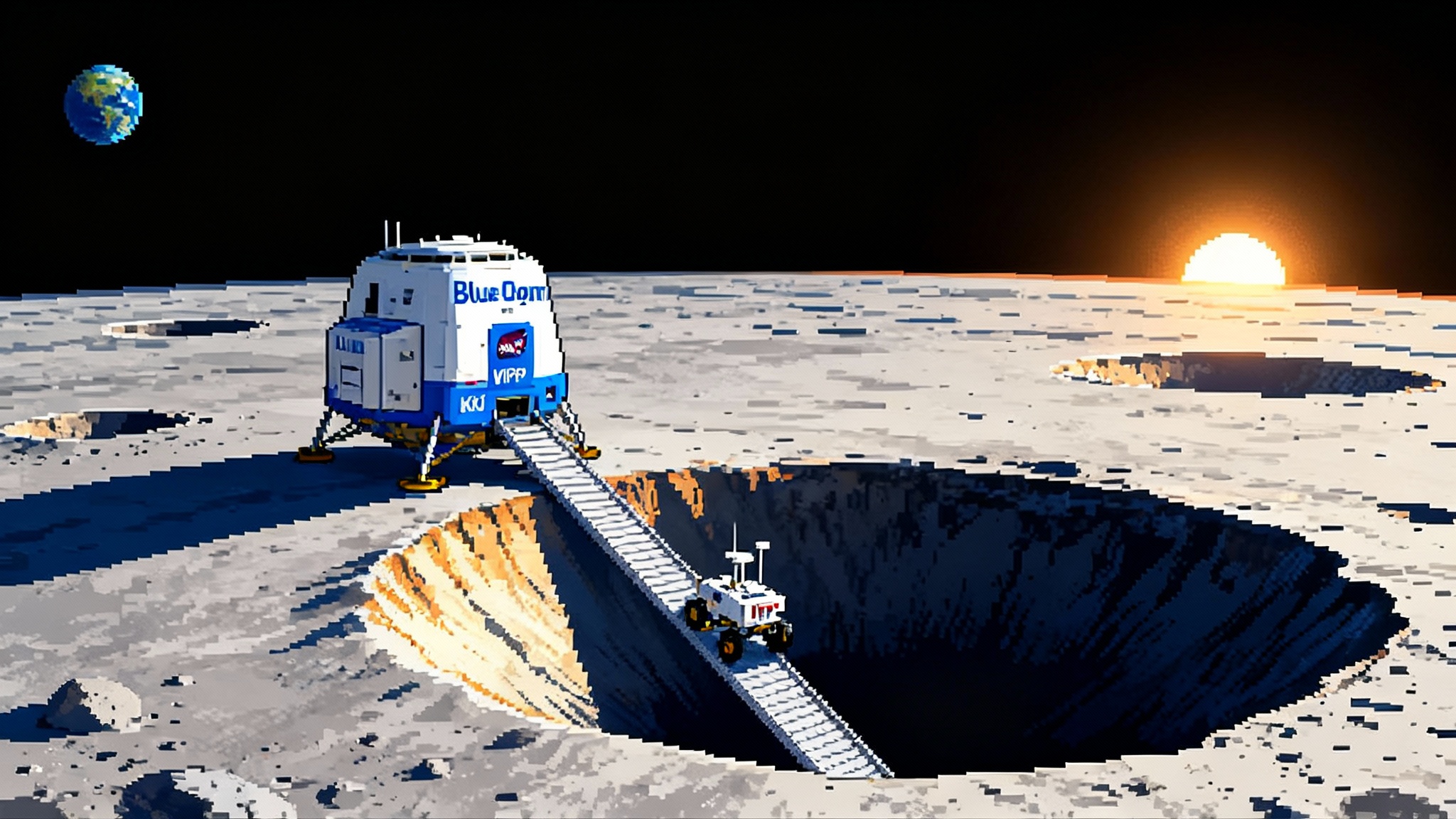Europa Clipper’s narrow window to skim 3I/ATLAS’s tail
From October 30 to November 6, 2025, Europa Clipper may cross the ion tail of interstellar comet 3I/ATLAS. With small, low-risk tweaks to pointing and data cadence, NASA and ESA could capture the first in-situ signatures from an interstellar tail.

A rare, fast-approaching chance in deep space
An interstellar visitor is threading our solar system, and a pair of robotic explorers are almost perfectly placed to learn from it without leaving their paths. A new analysis identifies a short window from about October 30 to November 6, 2025 when NASA’s Europa Clipper could be immersed in the ion tail of the interstellar comet 3I/ATLAS. A similar opportunity likely opens for ESA’s Hera spacecraft around October 25 to November 1, 2025. The prediction comes from a team using a geometry tool nicknamed Tailcatcher to model where the solar wind steers the comet’s ion tail and how spacecraft downwind might intersect it. The study estimates closest approach distances of roughly eight million kilometers to the tail’s central axis, well within the broad swath where tail signatures should be measurable. For the technical case and timing details, see the tail crossing prediction analysis.
The opportunity is unusual for two reasons. First, 3I/ATLAS is only the third confirmed interstellar object observed in our neighborhood. Second, its path lies close to the plane of the planets, which makes downwind alignments with cruising spacecraft plausible. NASA has already listed Europa Clipper among assets planning to observe 3I/ATLAS remotely as operations allow. Perihelion is around October 29, 2025 and the geometry shifts quickly after that, which means the tail corridor drifts past Clipper and Hera in a matter of days. For a concise mission overview and timeline, see the NASA 3I/ATLAS mission summary.
What exactly is an ion tail, and why it matters
Comets sprout two main tails as sunlight and the solar wind heat and strip their ices. One is the dust tail, made of tiny grains pushed gently by sunlight and curving along the orbit. The other is the ion tail, made of gas molecules that have lost electrons and become charged. Those ions are grabbed by the solar wind and swept into a near straight line that points away from the Sun.
Think of the ion tail as dye released into a fast river. The moment the dye mixes with the flow, the river controls its direction and speed. When the river encounters a boulder, the current lines wrap and bend. At a comet, the boulder is the region where gas is being ionized and the magnetic field of the solar wind piles up and drapes around that outflow. The resulting structure is large, structured by magnetic field lines, and it can be detected from far away through its effect on the solar wind itself.
A first in-situ reading of an interstellar ion tail would be historic. With 2I/Borisov and 1I/'Oumuamua we learned from telescopes at a distance. In-situ measurements can reveal how the interstellar ice mixture reacts to sunlight, which molecules are ionizing, how the magnetic field wraps around the coma, and whether heavy ions such as carbon dioxide or carbon monoxide ions are being picked up and accelerated by the solar wind. That is the kind of ground truth that helps bridge models of planet formation in other systems with what we can actually measure here.
The signatures to look for
Mission teams do not need exotic new sensors to catch an ion tail. Europa Clipper already carries instruments built to read the plasma and magnetic environment around Jupiter, and these tools are also well suited for sampling a comet’s tail from a safe distance.
-
Magnetic draping. As the solar wind runs into ionized comet gas, the magnetic field lines pile up and wrap around the obstacle. A magnetometer sees this as a smooth rotation in the field direction and a rise in field strength, followed later by a relaxation as the spacecraft exits the draped region. Europa Clipper’s magnetometer is designed for precise vector measurements. A textbook draping signature would be a tens-of-percent increase in field magnitude coupled with a directional change consistent with the solar wind flow and the comet–Sun line.
-
Plasma composition and flow shifts. The Plasma Instrument for Magnetic Sounding measures density, bulk speed, and temperature of the plasma using Faraday cups. It does not identify ion species, but it can see when the solar wind is mass-loaded by new ions. Expect a drop in solar wind speed, a rise in density, and a cooler distribution as pickup ions scatter into the flow. The directional response of the cups will also show when the flow angle shifts as the draped field deflects the wind.
-
Neutral gas sniffing. Europa Clipper’s MAss Spectrometer for Planetary EXploration has exceptional resolving power for neutral gases. Even millions of kilometers from the comet, a low duty cycle sniff could in principle detect a faint enhancement in key volatiles such as carbon dioxide or carbon monoxide if local densities exceed the instrument’s sensitivity. A null result is still scientifically valuable, since it constrains the scale and composition of the neutral envelope.
-
Dust grains, probably rare this far out. Clipper’s SUrface Dust Analyzer can characterize dust chemistry. At eight million kilometers off the tail axis, dust flux is expected to be extremely low, but a handful of large grains would be a bonus. Any hit would also help pin down grain sizes that survive far down the tail.
From these data alone, teams can test a clean set of hypotheses: does the field rotate the way a draped structure predicts, does the solar wind slow measurably, is there evidence for heavy ion pickup, and how wide is the region where these changes occur. Those answers will feed straight into models of how interstellar comets shed mass and how their volatiles behave under sunlight.
The smallest changes can secure the science
The best part is that none of this requires major trajectory changes or risk to the primary Europa mission. It calls for a few well chosen, time-boxed operations.
-
Pointing bias that stays inside thermal limits. In inner cruise, Europa Clipper often holds the high-gain antenna toward the Sun for heating constraints. A small yaw or roll bias of a few degrees during the window can align one of PIMS’s favorable cup look directions with the incoming solar wind flow while keeping the Sun within the keep-in zone and all power margins intact. Because PIMS has four cups and broad angular coverage, even a small bias boosts its geometric factor without compromising safety.
-
High-cadence burst modes, then back to cruise. Magnetometer and plasma data are most diagnostic when sampled at their higher rates. Set a two to three day interval centered on the predicted tail immersion for high-rate sampling, then return to normal cadence. The magnetometer supports high-frequency sampling suitable for draping, and PIMS can run short bursts at elevated cadence as power allows. Tag these intervals with precise timing beacons so teams can correlate any field rotation with plasma changes down to seconds.
-
Keep the bus quiet during the passage. Schedule reaction wheel desaturations outside the window, avoid any nonessential thruster firings, and hold off on activities that create electromagnetic noise. The goal is a clean time series in which any spikes belong to space, not to the spacecraft.
-
Use the recorder smartly. Pre-allocate solid-state recorder partitions for fields and particles, turn on lossless or near-lossless compression, and update fault protection so that a safe mode does not purge the partition. This is routine for planetary flybys and fits well within standard cruise procedures.
-
Coordinate with the Deep Space Network. Book downlink passes just after the window so the team can see the data quickly. For Hera, whose payload is tuned for asteroids, one clever option is to use radio science techniques with compatible ground stations to track changes in carrier phase and amplitude that reveal plasma irregularities along the line of sight.
-
Cross-calibrate with heliophysics monitors. Solar wind speed and direction can change rapidly, which nudges the tail. Near real time solar wind models and upstream monitors help refine the onset time and geometry. For broader context on heliospheric monitoring, see the IMAP at L1 heliosphere map.
These are the kinds of short, reversible changes missions make routinely for instrument checkouts and calibrations. The total delta-v is zero if you avoid course changes, the thermal environment remains inside margins, and all activities are compatible with maintaining spacecraft health. If the window closes or the solar wind shifts unfavorably, operations simply revert to baseline.
Why this is low risk
An eight million kilometer offset from the tail axis is far outside any dense coma. Particle fluxes are orders of magnitude lower than the dust and radiation environments Europa Clipper was built to endure near Jupiter. The instruments in question are designed for precisely this kind of space plasma and field reading. The risks are ordinary, like any time you run burst modes or change pointing by a few degrees, and they are well understood and documented for this spacecraft.
For Hera, the case is even simpler. Hera’s primary science is at the Didymos system in 2026 and 2027, and its main payload consists of cameras, a small lidar, and thermal and hyperspectral imagers, plus two CubeSats that will deploy near the target. During the cruise window in late 2025, Hera can still contribute context. A brief shift in attitude to favor sun-safe pointing while maximizing the radio link geometry for plasma scintillation studies is low effort and does not compromise the asteroid campaign.
What success looks like
A clean field rotation and a density and speed change over several hours would be a win. If Europa Clipper records the magnetic draping profile and a mass-loaded solar wind signature, that alone would constitute the first in-situ detection of an interstellar comet’s tail interaction with the heliosphere. A detection of neutral volatiles would be a bonus. Even if every instrument sees nothing but the quiescent solar wind, the null result is powerful. It pins down the width and strength of 3I/ATLAS’s ion tail and sets upper limits that future interstellar visitors must beat.
The data would live on beyond the news cycle. Modelers can replay the solar wind conditions and test how different volatile mixes produce different tail widths and draping angles. Comparative planetology teams can stack this against comet 2I/Borisov’s remote observations to see whether interstellar comets share a common playbook or whether their chemistry varies widely.
The bigger idea: cruise time as discovery time
This is about more than a single interstellar comet. It is a test of how we treat deep space cruise. Missions like Europa Clipper spend years between launch and arrival. That time is not empty. With today’s predictive tools and a light operational touch, cruise can be a rolling opportunity for piggyback science.
-
Build a Cruise Science Playbook. Before launch, give every deep space mission a menu of safe, short observations that exploit common opportunities like comet tails, coronal mass ejection shocks, and planetary aurorae. Include preplanned attitudes, data rates, and DSN sequences so approvals take hours, not weeks. For Mars space weather context, see ESCAPADE Mars space weather.
-
Stand up a cross-mission alert flow. A small forecasting cell can push alerts to missions when a tail or solar wind feature is about to drift across their lines of sight. The Tailcatcher method is a good template, and it can be extended to other phenomena.
-
Reward rapid, shared data releases. Short, curated cruise datasets can be posted quickly so modelers and observers can pounce while the solar wind context is fresh. For a complementary view of space “weather,” see XRISM cosmic weather map.
-
Make it a habit. Put the same muscle memory behind these maneuvers that teams already use for safe modes and calibrations. Once the payoff is visible, it becomes standard practice.
One day, a mission will pass close enough to an interstellar comet to taste its molecules in detail. Until then, the smart move is to learn whenever geometry gifts us a chance. Early November 2025 is one of those moments.
The moment to move
The window is narrow and the actions are simple. For Europa Clipper, authorize a short, high-cadence fields and particles campaign centered on the predicted immersion, with a small, sun-safe pointing bias and quiet bus operations. For Hera, schedule coordinated radio tracking passes and a brief quiet-bus interval while the tail is predicted to wash over the spacecraft’s line of sight. Both teams should lock in DSN coverage immediately after the window to pull the data down fast.
If the signatures appear, the result would be a scientific first and a proof of concept for a broader cruise science culture. If not, the cost was minutes to hours of operations time and zero risk to the primary goals. In either case, we learn. In deep space, that is what counts.
A comet made in another star system is about to sweep its tail across our path. We can choose to listen as it passes. This time, listening only requires leaning in a little, recording at a higher beat, then carrying on to the main show at Jupiter.








